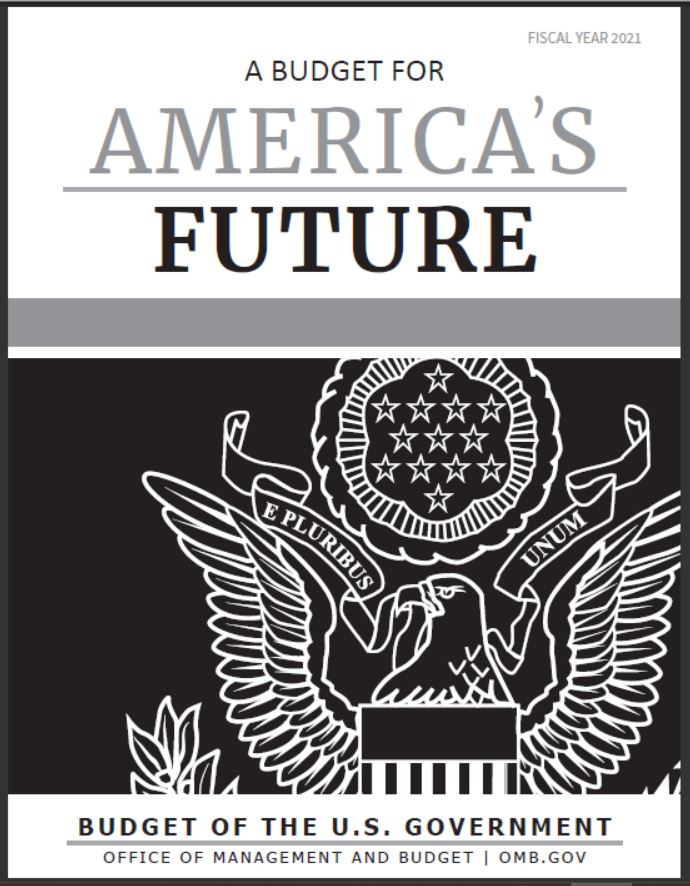President Donald Trump has unveiled his budget proposal for the next federal fiscal year, and it’s predictably harsh for wildlife and the environment — but great for oil, gas and coal.
 Of course, the annual presidential budget is more spectacle than anything else. The real budget each year comes from Congress, which may or may not take up the president’s suggestions.
Of course, the annual presidential budget is more spectacle than anything else. The real budget each year comes from Congress, which may or may not take up the president’s suggestions.
But whether White House budget proposal’s recommendations go any further, it reveals the dark truth about the Trump administration’s priorities, especially as they relate to environmental issues.
Here’s what we see in this year’s budget:
- The Environmental Protection Agency’s budget would be slashed 26.5%, including a 10% reduction in the Superfund hazardous-waste cleanup program, a nearly 50% reduction in research and development, a $376 million take from efforts to improve air quality, and the elimination of 50 programs that the administration perceives as outside the “core” of the EPA’s mission (among them: clean-water grants for disadvantaged communities and the EnergyStar energy-conservation program). It would also reduce EPA staffing to its lowest levels in three decades, further hampering enforcement of existing regulations.
- The Department of the Interior would lose 8% of its budget, including $587 million from the National Park Service and $80 million from the U.S. Fish and Wildlife Service. That includes an $11 million reduction in the Endangered Species Act listing program (which evaluates species for their extinction risk).
- Federal land acquisition through the Land and Water Conservation Fund would be nearly eliminated through a 97% budget cut — after a long fight to reauthorize the program over the past two years.
- The Multinational Species Conservation Fund would be cut by $9 million.
- State and tribal wildlife grants would lose more than half of their funding.
- The Department of Energy’s Energy Efficiency and Renewable Energy funding would be cut by 74% and the Advanced Research Project Agency–Energy efforts would be eliminated as part of a larger trend toward defunding research and development and basic science.
More backward logic from the Trump Administration: While our nation faces a looming climate crisis, the #TrumpBudget proposes to slash EPA funding by 26.5%, slash DOE Energy Efficiency and Renewable Energy funding by 74%, & eliminate the Advanced Research Projects Agency – Energy pic.twitter.com/zlix6wbhj9
— House Budget Committee (@HouseBudgetDems) February 10, 2020
- The U.S. Geological Survey would lose about half of its ecosystem funding, including a $36.6 million reduction for the Climate Adaptation Science Center and $37.2 million for the Species Management Research Program, which supports the recovery and conservation of hot-button species like the greater sage grouse and desert tortoise.
- NOAA would lose several programs, including the Sea Grant, Coastal Zone Management Grants, education grants and the Pacific Coastal Salmon Recovery Fund.
- Also gone: the National Park Service’s Save America’s Treasures grants and the Highlands Conservation Act grant.
- The Centers for Disease Control, as part of Health and Human Services, could lose 9% of its budget, while the U.S. contribution to the World Health Organization would be cut in half — although the administration says it won’t touch coronavirus-related funding.
- U.S. funding for United Nations peacekeeping efforts would be cut by $447 million — just as the threat from climate change makes certain conflicts more likely.
Oh, and let’s not forget about the nearly $1 trillion in proposed cuts to Social Security and Medicare, which came just two days after President Trump promised no changes to those programs.
Not even two days later, and Trump releases a budget that cuts $30 billion from Social Security and $850 billion from Medicare.
If you voted for this man because you took him at his word, your country needs you. Don’t be fooled again by our liar-in-chief’s broken promises. https://t.co/Su6EshDnz2
— Robert Reich (@RBReich) February 10, 2020
Meanwhile the budget increases some funding in unexpected places:
- The border wall would get $2 billion in extra funding, with another $182 million devoted to hiring 750 new Border Patrol agents and 300 border processing coordinators and related support staff. That doesn’t even include the $544 million earmarked to hire 6,000 ICE personnel.
- Infrastructure would get $1 trillion in funding, which is great, but development projects — notably pipelines and other energy-related projects — would also be subject to a sped-up permitting process designed to supersede pesky environmental regulations such as the National Environmental Policy Act.
- Nuclear energy will get $1.2 billion in research and development funding (although the budget eliminates the money to license the Yucca Mountain nuclear waste repository).
- The budget adds $188 million in funding to map the ocean floor — a precursor to coastal development and deep-sea mining.
- It also adds an unspecified amount of money for the promotion of coal, including support of “extracting critical minerals from coal and coal byproducts as one of many non-thermal, non-power uses of coal.”
- The Department of Justice’s Environment & Natural Resources Division has asked for an additional $4.8 million and five new attorneys to help it defend the administration’s antienvironmental policies, including the border wall, changes to the Clean Air and Clean Water acts, and other aspects of the “natural resource regulatory reform agenda.” DOJ says “virtually every significant agency action implementing this agenda has been or will be challenged.”
- And the budget promises continued support for and increases in U.S. oil and natural gas development.
The budget also takes a quiet jab at the media by promising to cut money spent on “subscriptions.” This continues a trend the administration started last year when it cancelled White House subscriptions to The New York Times and The Washington Post and promised to repeat this version of “cancel culture” throughout the federal government. The president has infamously called journalists the “enemies of the people.”
It’s doubtful that much of this will make the final budget — Congress reinstated many of the Trump administration’s proposed cuts when they wrote the official 2020 budget — but does that really matter? The administration has already shown its willingness to not spend congressionally allocated money on programs it doesn’t like. Earlier this month congressional Democrats revealed that the Department of Energy has held onto $823 in funding for clean-energy research and development — a program whose funding the administration had originally proposed cutting by 86%.
No matter what happens in Congress, we can expect the same type of budgetary actions from this administration in the future.
“We’re going to keep proposing these types of budgets and hope that at some point Congress will have some sense of fiscal sanity and join us in trying to tackle our debt and deficits,” Russ Vought, acting director of the White House Office of Management and Budget, said during a press briefing.
Speaking of that debt, the Congressional Budget Office last month projected that the federal budget deficit will reach $1.02 trillion this year due in large part to the Trump administration’s tax cuts. The national debt, meanwhile, rose to a record $23 trillion this past November. Experts say White House budget will not be able to address either of those problems.
Does the Trump budget propose anything beneficial? Ironically, it promises to tackle wasteful federal spending on things like travel. Whether that includes the $650 a night that the Secret Service has been paying to house its agents at the president’s luxury properties remains to be seen.
![]()



1 thought on “Trump Budget Proposal Reveals Regressive Environmental Priorities”
Comments are closed.